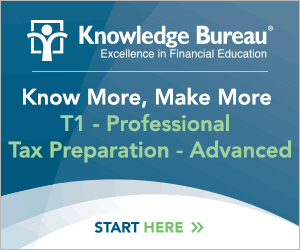Last updated: June 09 2015
New Form Defines Tax Exemptions for Status Indians

When is employment income earned by an Aboriginal person exempt from income tax?
Under what circumstances must employers remit withholding taxes? Must CPP and EI be remitted in that case? An updated form TD1-IN has been issued by CRA to help employers comply with these important obligations, but the rules are complicated. The services of a tax and wealth management specialist are well worth it, especially in assisting Aboriginal families with wealth building opportunities.
By way of background, the person qualifying for the exemption must be registered as an Indian with Aboriginal Affairs and Northern Development Canada, under the Indian Act, which dates back to federal legislation of 1876 and was last amended in 1985 under Bill C-31. The Act exempts personal property of an Indian from taxation. If certain criteria are met (as outlined below), income of an Indian is considered their personal property and is therefore exempt from taxation. According to the 2011 Census, there are 1.4 million Aboriginal People in Canada, which represents 4.3% of the Canadian population.
While there are over 3100 reserves, there are 600 distinct First Nations Bands in Canada, and 638,000 First Nations people who are registered or Status Indians; about 50% of these folks live on a reserve. That’s important because whether income earned by an employee is exempt from withholding taxes largely depends on residency of the employee, but it may also depend on residency of the employer.
Here’s how the rules work, as outlined on the new form, TD1-IN:
-
100% exemption from tax applies if any one of these factors exist:
- The employee performs more than 90% of employment duties on the reserve, but the employer does not reside there.
- Both the employee and the employer live on the reserve
- Both the employee and the employer live on the reserve and the employee performs 50% of the employment duties on the reserve.
- Unless another exemption can be applied, the 90% exemption will be prorated depending on where the employment duties are performed.
- If the employee works for an Indian band that has a reserve or tribal council representing one or more bands (or an Indian organization controlled by one or more of such bands or tribal councils), and the employer, employee and recipients of the services “for the most part” live on the reserve, income earned by the employee may be exempt from tax. However, the band or tribal council must be exclusively dedicated to the social, cultural, educational or economic development of Indians in the delivery of their non-commercial services.
The form goes on to state that employment income will not be exempt from tax where one of the main reasons for the employment relationship is to establish a “connecting factor” to the reserve. This means that simply locating a business on the reserve is not enough to establish income tax exemptions.
Exempt employment income is not pensionable for CPP purposes but is insurable for EI purposes.
Income derived from exempt income will also be exempt. For example CPP/QPP (Canada/Quebec Pension Plan) payments, EI (Employment insurance)benefits, retiring allowances, registered pension plan benefits, and wage-loss replacement plan benefits. Where a portion of the employment income that generated the payment is exempt from tax, the exempt portion of the derived income will be prorated according to the same ratio.
Advisor Alert: Tax specialists and wealth advisors will want to make it a priority to educate their clients who are business owners about these rules in order to best serve their clients who qualify for the income tax exemptions.
Client Alert: If you are a Status Indian with part of your income earned on and off a reserve, planning for the tax exemption should include an investment opportunity to shore up TFSA and RESP deposits for family members. See a DFA-Tax Services Specialist and an MFA-Real Wealth Management Specialist for assistance.

